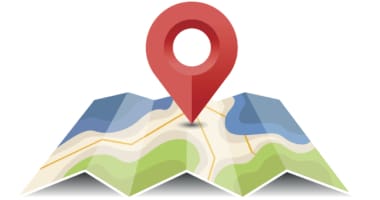Amid declining reimbursement and tight staffing, practices are turning to technology to provide an added boost. College Practice Management Committee members offer top tips to leverage technology. “There are so many choices on what can be done, and it can feel daunting, but invest in one change and build from there,” said Alnoor Malick, MD, FACAAI, vice chair of the Practice Management Committee.
You can find more tips in the College’s Practice Profitability toolkit!
- Add remote patient check in and self-scheduling options.
Patients are comfortable with – and have come to expect – digital patient-engagement tools, including patient self-scheduling capabilities for appointments; digital payments; online preservice check in; and post-visit payment plan options. Give patients the option and ability to complete forms (nonclinical and clinical) online, log insurance information and pay their co-pay when checking in remotely (while continuing to offer support for these functions in the office for those who prefer it). You’ll improve patient satisfaction, and you’ll free up staff time for other tasks. “Carolina Asthma & Allergy Center uses a combination of Phreesia for patient check in, registration, and payment assurance; and Luma for appointment reminders and self-scheduling (New & Est),” said Charlie Furr, MHA, former member of the Practice Management Committee. “These systems have helped us enormously by reducing no-shows, increasing patient responsibility collections, and easing the scheduling process.” For more information about digital patient engagement tools, read MGMA’s article. - Automate, automate, automate.
Review front desk and clinical staff workflow and automate as much as possible. Automated appointment reminders, insurance verification, online bill payment and patient scheduling will all save your staff time and energy. “By automating many of our front office team’s tasks, we were able to reduce operating costs by eliminating one FTE employee,” said Jean Owen, MBA, vice chair of the Practice Management Committee. - Use a patient portal.
A portal can improve efficiency in multiple ways. When new patients complete their demographic information, list of medications and past medical, social and environmental histories online, the information is imported into your electronic health record to speed up check in and triage. Patients may also use the portal to request prescription refills and communicate with clinical staff, reducing time spent on patient phone calls. Plus, you can send appointment reminders, patient education and treatment plans to patients via the portal. - Implement a credit card on file policy.
A “credit card on file” system will shrink time in accounts receivable, reduce administrative expenses and capture lost revenue. Inform patients they will need to bring a credit card and that it will be pre-authorized for an amount equal to the estimated out-of-pocket cost. Once the insurance remittance has been received detailing the patient responsibility portion, the card is processed for that outstanding balance amount. There is no need for statements. For step-by-step instructions on implementing a “credit card on file” policy, check out our “Credit Card on File” educational module, which is part of the Allergy Office Essentials package. - Consider e-scribes.
Allergists who use scribes cite multiple benefits, including the ability to spend more time with patients, improved documentation, and bringing joy back to their allergy practice. E-scribe options, many using artificial intelligence, are now widely available and are becoming more cost effective. Using an e-scribe may enable you to see more patients, which can pay for the cost of a scribe – or even increase profits. Learn more in the AMA’s article AI scribe saves doctors an hour at the keyboard every day and in the AMA STEPS Forward™ module on team documentation. - Leverage College prior authorization appeal letter generators.
Use the College’s 13 prior authorization appeal letter generators to create scientifically based, customized PA appeal letters in under 10 minutes. Our letters are created by allergists, for allergists – and all include medical literature references. Members tell us our tools save time and increase PA approval rates! (Have your manager join the College for free to access these tools). - Incorporate e-visits and/or e-consults.
When an allergist or NP/PA addresses a patient-initiated health concern and/or medical question via the patient portal, it may qualify as a billable e-visit. An E&M visit must be performed to qualify. Learn more with Medical Economics’ article How to correctly document and bill for patient e-visits. With e-consults, allergists get paid to provide patient treatment advice to PCPs, hospitalists, other physicians or NPs/PAs via telephone, internet or EHR. Medicare began paying for this service in 2019 and commercial payers are now covering it. The College article Coding for interprofessional consults provides details. - Use card scanner check-in for the shot room.
Some practice management and/or electronic health record software can use bar code scanners for shot patient check-in. This keeps your shot nurse focused on efficiently giving shots and not manually checking in patients. Scott McCutcheon, MHA, Practice Management Committee member, said, “We have been using bar codes for our patients receiving allergen immunotherapy injections for several years. It not only improves efficiency but also accuracy and therefore safety.”
There are many ways to leverage technology to increase revenue, reduce the burden on physicians and staff, and improve practice efficiency. Choose one or two of the suggestions above to get started! For more cost-saving ideas, check out the College’s Practice Profitability Toolkit.




